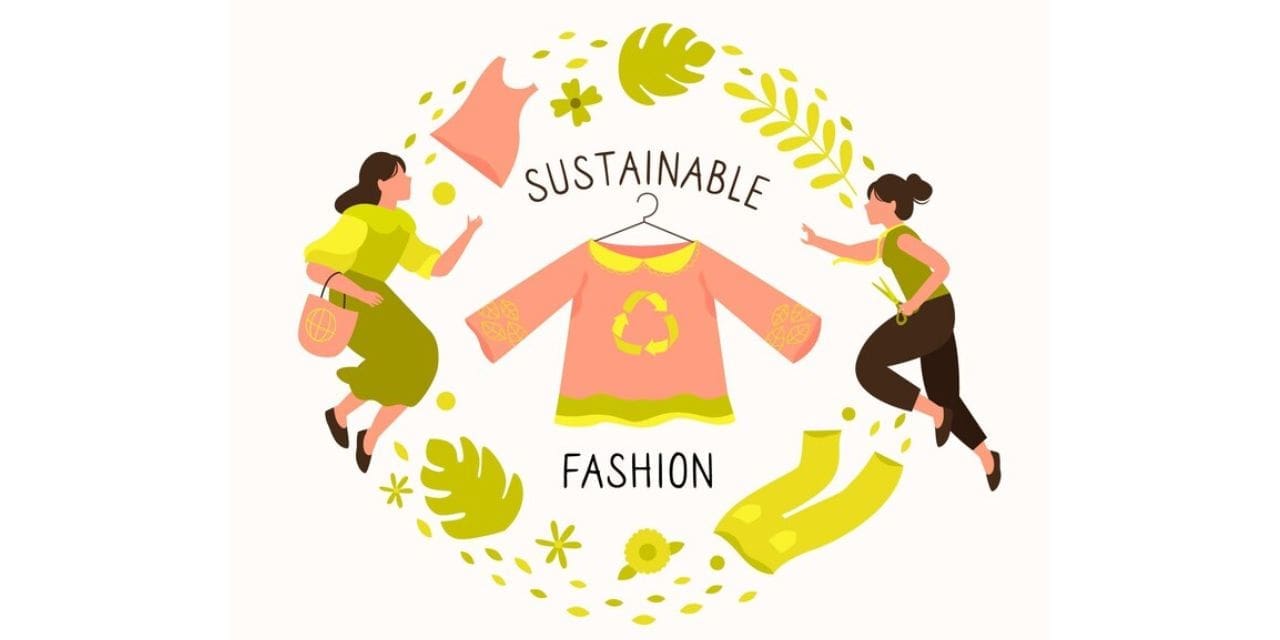Eco-printing is a cutting-edge method that blends creativity along with environmental awareness in the field of sustainable fashion. Using natural dyes and plant ingredients, this inventive technique produces complex and distinctive patterns on fabric. Eco-printing is opening the door for a more environmentally conscious and sustainable method of producing and designing textiles, from its roots in traditional textile arts to its current uses in modern fashion.
The History and Development of Eco-Printing:
The history of eco-printing dates back to ancient textile traditions, especially in those societies where textiles were decorated with natural dyes and pigments derived from plants. Native Americans have long used dye strategies, such as using leaves, flowers, and bark, to produce vivid and complex patterns on textiles.
Picking natural fibers such cotton, silk, linen, or wool typically serves as the first part in the eco-printing operation because these fabrics readily soak open natural dyes. To get rid of any chemical residue that could prevent the colour from absorption, the fabric is pre-treated. The cloth is covered with the selected plant materials organized in the desired patterns or motifs. After that, the fabric is firmly bundled to hold the plant components in position. With order to apply pressure and guarantee that the plants and the fabric make good contact, the bundle is frequently wrapped with fabric or knotted with string. The natural colors from the plant ingredients are subsequently taken out from the bundle and added to the fabric from boiling or steaming it. The bundle is allowed to cool before being unwrapped after steaming or boiling.
Upon its introduction, the eco-printed cloth may go thru further processes to improve its durability and look, including washing, drying, ironing, or embellishing.
Natural dyes are used in eco-printing as they’re non-toxic and biodegradable, in contrast to synthetic dyes, who frequently include toxic ingredients and pollute water. They encourage environmental stewardship and reduce the ecological footprint of the textile industry.
Benefits of Green Printing:
By using locally and renewable plant materials, eco-printing lessens the demand for fossil fuels and energy-intensive production techniques. Using the unique designs and hues of the plant materials deployed, each eco-printed cloth is one-of-a-kind. Customers looking for individualized and distinctive apparel and accessories are drawn to this distinctiveness. Through eco-printing, traditional knowledge of natural dyeing methods is preserved, and a respect for the diversity of plants is fostered.
Clothes including dresses, blouses, scarves, and jackets are made from eco-printed materials. Fashion designs have a bohemian, organic, and handcrafted appeal thanks to the natural motifs and earthy colours. Additionally, accessories like purses, hats, shoes, and jewellery are made from eco-printed textiles. Eco-printed textiles are utilized by designers and artists in mixed-media pieces, installations, and crafts. The distinct textures and natural patterns amplify artistic expressions and give visual compositions more depth.
Research and development efforts should continue with emphasis directed at ensuring eco-printed textiles have long-term colour fastness and durability without sacrificing sustainability. Scientists, designers, artists, and industry participants collaborating can spur innovation and research in eco-printing methods, materials, and uses. Upcycling and closed-loop textile recycling are two examples of circular economy concepts that can incorporate eco-printing to strengthen the sustainability of eco-friendly clothing.
Fundamentally, eco-printing is a combination of art and sustainability and embraces contemporary eco-friendly methods while taking cues from antiquated textile techniques. Utilizing the hues and patterns inherent in the natural world, eco-printing presents a distinctive and sustainable substitute for traditional dying techniques. Furthermore, eco-printing supports sustainable practices from production to consumption by showcasing artisanal craftsmanship and encouraging the use of locally and renewable resources. Eco-printing stands out as a crucial step toward a more mindful and responsible fashion business, where creativity and environmental stewardship go hand in hand, as the demand for sustainable design continues to rise.
Eco-printing, it combines ecologic approaches with creative inspiration from nature, is a crucial step toward sustainable fashion. This technique lessens the effect on the environment while producing beautiful designs on fabric using natural dyes and plant resources.
Bibliography
Anandya, K. (2023). The Sustainable Way of Prints – Fibre2Fashion
Dulman, I. (2024). Eco Printing on Linen – Iritdulman

